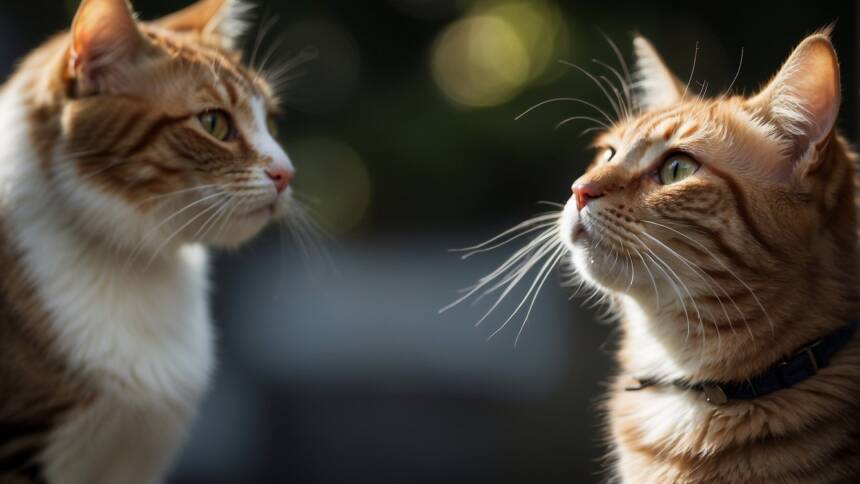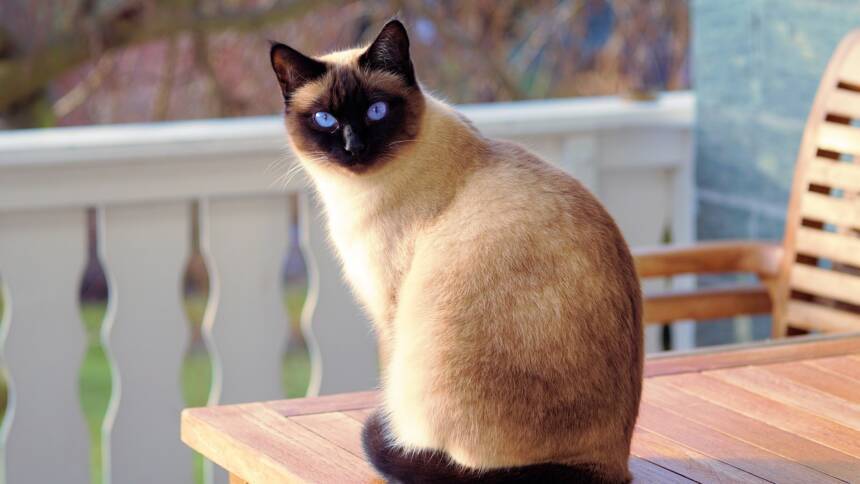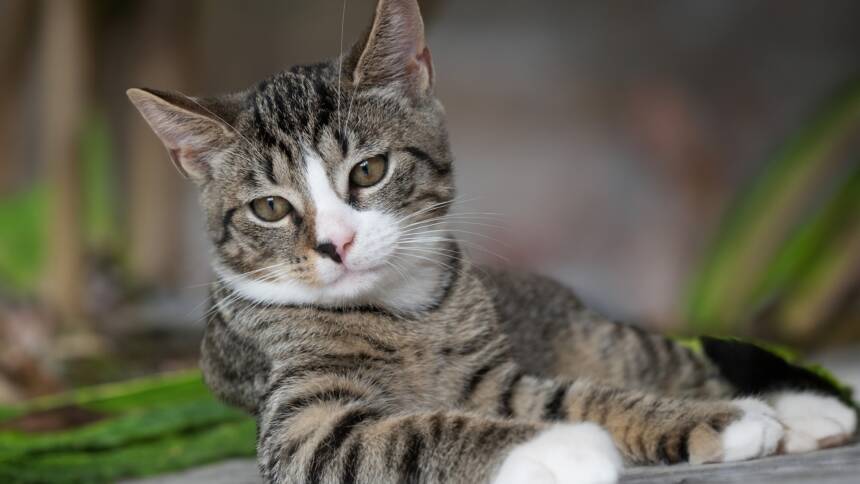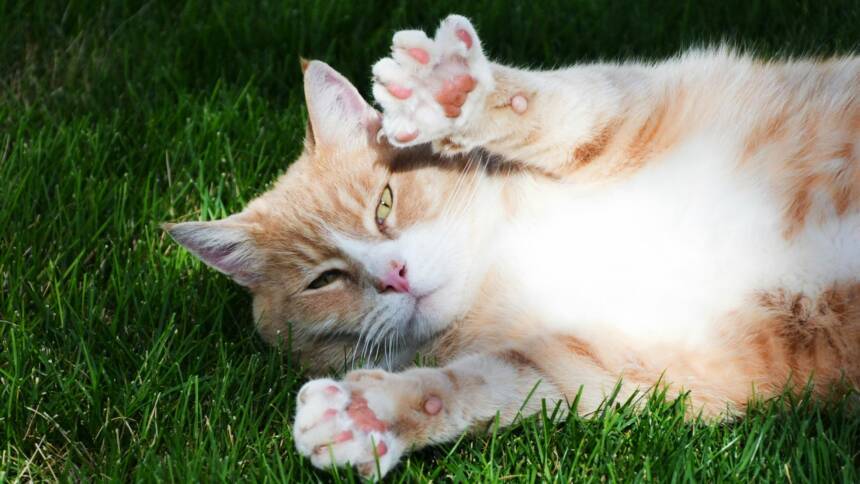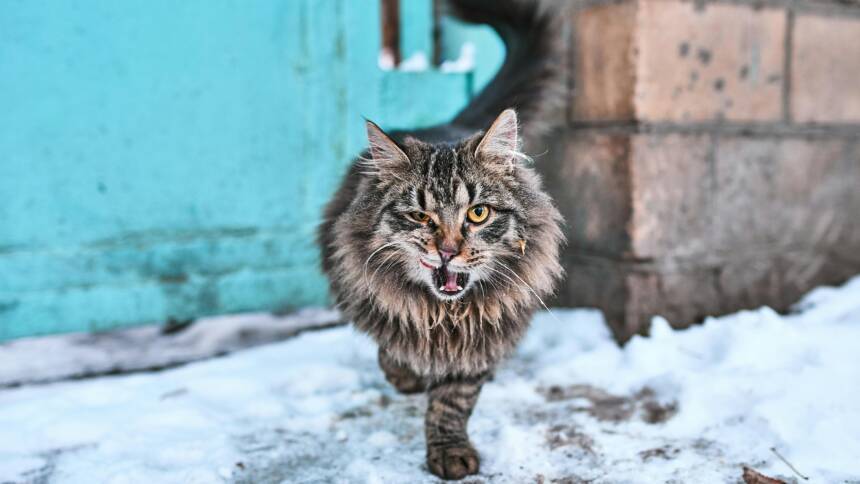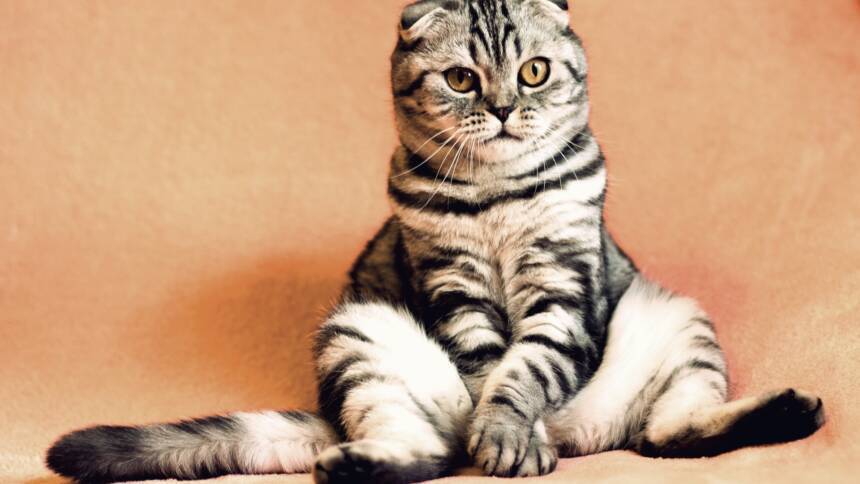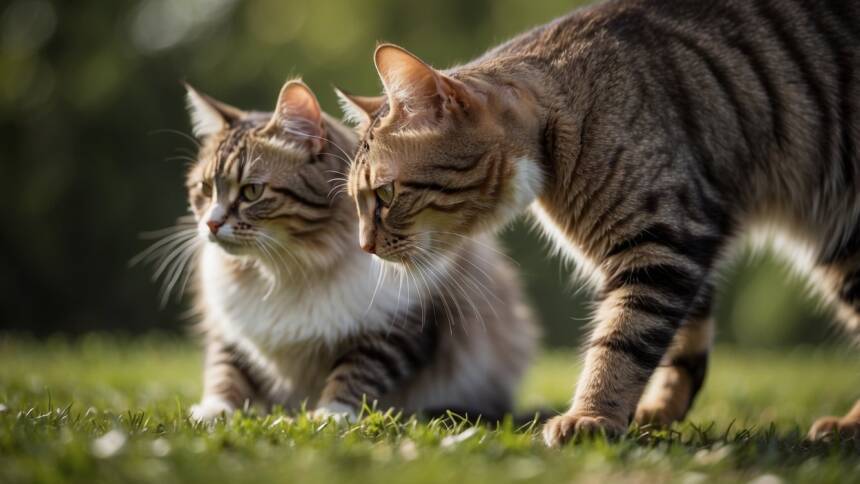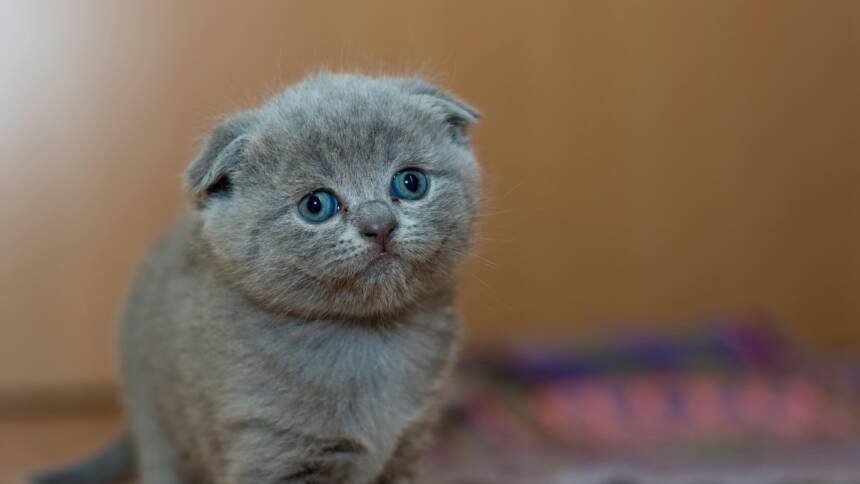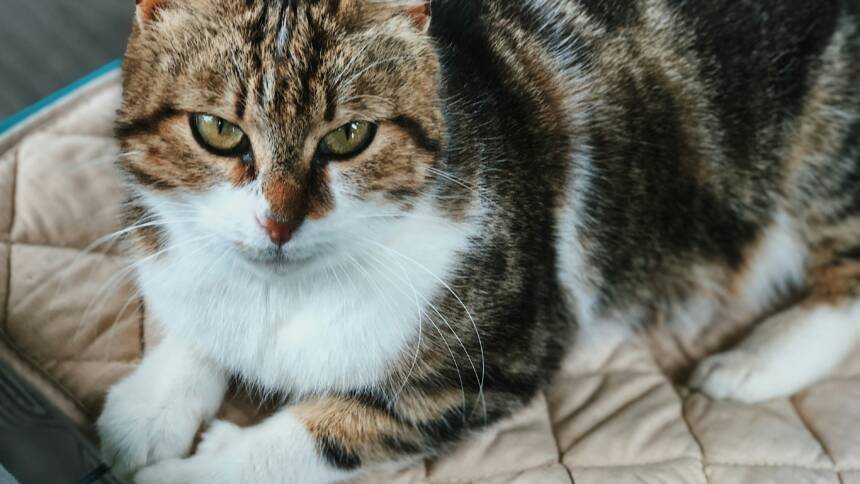Cats are known for their varied repertoire of vocalizations, with meowing being the most common way they communicate with humans. While some meowing is normal, a cat that never stops meowing can indicate several underlying issues ranging from behavioral needs to more serious health concerns. They might be trying to tell their owners something, whether it’s a simple request for attention or an indication of discomfort or pain.
Persistent meowing can sometimes stem from environmental stressors or changes in the cat’s routine, leading to anxiety or loneliness. In other cases, excessive vocalization can be a symptom of medical conditions such as hyperthyroidism, high blood pressure, or pain from an injury. It’s crucial to understand that while some cats are naturally more vocal than others, a sudden increase in meowing should not be overlooked, as it could be a cry for help.
Owners of chatty felines should observe the circumstances under which their cat meows excessively. It may occur more frequently during certain times of the day, or in response to specific situations or needs, such as an empty water bowl or a dirty litter box. Deciphering these patterns can help pinpoint the cause and address the cat’s incessant meowing in an effective manner.
Understanding Cat Vocalizations
Cats communicate with their humans using a sophisticated system of vocalizations, with meowing being one of the primary sounds. Each vocal cue can convey a different message depending on various factors such as the cat’s breed, which often influences their vocal behavior.
The Meaning of a Meow
A cat’s meow serves multiple purposes—it can indicate hunger, request attention, or express different emotions, from contentment to distress. The meow can vary in volume, pitch, and duration, with subtleties that can sometimes be understood only by the owners who are familiar with their cat’s specific vocal patterns. For example:
- Short, high-pitched meow: Often a greeting or a request for attention.
- Prolonged, drawn-out meow: Can signify hunger or the desire to go outside.
Breed and Vocalization Patterns
Different cat breeds exhibit distinct vocalization patterns. For instance:
- Siamese: Known for being extremely vocal with a distinct, loud meow.
- Maine Coon: They tend to have a softer, chirping trill.
Breeds can thus influence how often and in what way a cat might vocalize. Some breeds are naturally more inclined to communicate with their human companions frequently, while others may be more reserved.
| Breed | Typical Vocalization |
|---|---|
| Siamese | Loud, frequent meows |
| Maine Coon | Soft chirps and trills |
| Persian | Quiet, less vocal |
| Scottish Fold | Varied, often quiet meows |
Owners should pay attention to their cat’s vocal cues and consider the breed’s typical patterns when interpreting their pet’s sounds.
Common Causes of Excessive Meowing
Cats may meow excessively for various reasons, ranging from social cues to health concerns. Understanding the root cause is essential for addressing this behavior effectively.
Attention and Companionship
Cats often seek attention from their owners through meowing. This behavior can indicate a desire for interaction, play, or even just your presence. Siamese breeds, known for their vocal nature, may be particularly prone to meowing for attention. Ensuring regular playtime and interaction can help mitigate this need for companionship.
Hunger and Diet
Meowing can also be directly related to a cat’s feeding schedule or diet. A clear pattern of vocalization around meal times suggests hunger or dissatisfaction with their food. Consistency in feeding times along with a well-balanced diet tailored to an individual cat’s needs can help reduce meowing related to hunger.
Medical Issues to Consider
A variety of medical conditions can cause a cat to meow more than usual. These include:
- Illnesses: like kidney disease or urinary tract issues
- Pain: from conditions such as arthritis
- Hyperthyroidism: an overactive thyroid gland
- High blood pressure: may lead to increased vocalization
It is important to consult a veterinarian if there is a sudden change in a cat’s meowing patterns, as it may signal a health issue needing immediate attention. Regular check-ups can help identify and manage medical problems that could be causing stress and discomfort, leading to excessive meowing.
Behavioral Aspects of Meowing
Cats use meowing as a sophisticated form of communication, often influenced by their emotional and physical state. The behavior of meowing can reveal much about what a cat may be experiencing or requiring from their environment and their human companions.
Stress and Anxiety
Cats experiencing stress or anxiety may express their discomfort through constant meowing or yowling. Stressful situations such as moving to a new home, changes in the household, or introducing new pets can trigger vocal behavior. Recognizing the signs of stress early and providing a safe and comfortable environment can help reduce anxiety-induced meowing.
Mating Calls and Reproductive Behavior
When cats are in heat or are exposed to potential mates, they engage in a type of vocalization known as mating calls. Unspayed females may yowl frequently to attract males. Similarly, unneutered males can become very vocal when they detect a female in heat nearby. Spaying or neutering cats can prevent this behavior.
Territorial Yowls and Greetings
Cats are territorial animals and may yowl to assert their dominance over an area or to warn others of their presence. This noisy, long-drawn-out sound is very distinct from a greeting meow, which is typically shorter and friendlier. Cats may also greet their owners or other familiar people with a meow to initiate interaction or show affection.
Medical Concerns Linked to Vocalization
Excessive meowing in cats can point to underlying health issues. Prioritizing veterinary evaluation is crucial to rule out or diagnose medical concerns that may influence a cat’s vocal behavior.
Identifying Pain and Discomfort
Cats often vocalize more when experiencing pain or discomfort. Injuries or conditions such as arthritis can lead to increased meowing as a cat seeks attention or relief. A veterinarian can perform a thorough examination to assess for physical causes of pain, including dental issues which are not immediately apparent to owners but can cause significant discomfort.
Chronic Conditions Influencing Voice
Certain chronic conditions are notably associated with changes in a cat’s vocalization patterns:
- Kidney Disease: This can lead to toxins building up in a cat’s system, potentially making them feel unwell and leading to increased vocalizations.
- Hyperthyroidism: Cats with this thyroid gland disorder may meow more due to increased metabolism and anxiety.
- Cognitive Dysfunction: Older cats may suffer from cognitive dysfunction, akin to dementia in humans, resulting in confusion and disorientation, which can manifest as excessive vocalizing, particularly at night.
Regular veterinary checks can help in the early detection and management of these chronic conditions, ensuring the wellbeing of the cat and potentially reducing stress-related vocalization.
Environmental Factors Affecting Meows
Cats may alter their meowing patterns due to changes in their environment. These vocalizations could either increase or decrease as a response to various stressors or alterations in their living conditions.
Changes in the Home
When a family moves to a new home, a cat’s sense of security is disrupted, leading to increased vocalization as a form of expressing uncertainty or seeking comfort. Introduction of a new pet into the household can also trigger a cat to meow more frequently, often as an attention-seeking behavior or as a means to establish territory and hierarchy.
- Moving: Relocation often leads to a temporary increase in meowing due to unfamiliar surroundings and scents.
- New Pet: The arrival of another animal could cause a cat to communicate more as they adjust to sharing their space.
Adjustments to Routine and Schedule
Cats are creatures of habit, and any adjustments to their daily routine can result in increased vocalization as they attempt to communicate their displeasure or confusion. Major changes such as alterations in their feeding schedule, the owner’s work schedule, or even rearranging furniture can lead to environmental stress, prompting a cat to meow more.
- Feeding Schedule:
- Shifts in meal times: Cats may meow to remind their owners of their regular feeding times.
- Quality of food: Changes in food type can also lead to vocal complaints if the cat prefers its previous diet.
- Owner’s Work Schedule: A cat may express loneliness or anxiety through meowing when their human companions alter their work routines, leading to less attention or interaction.
Training and Managing Meowing Behavior
Training cats to control their meowing is a process that necessitates consistency and patience. It involves identifying the causes of meowing and using techniques that reward silence while discouraging excessive vocalization. The approach should be multifaceted, incorporating positive reinforcement and understanding behavioral cues.
Positive Reinforcement Techniques
To encourage a cat to be quieter, one should employ positive reinforcement. This means rewarding the cat when it is calm or silent. Here are specific strategies:
- Create a Routine: Cats are creatures of habit, and a predictable schedule for feeding, playtime, and attention can foster a sense of security, diminishing the need to meow excessively.
- Rewards: Offer treats, pets, or verbal praise when the cat exhibits quiet behavior. This links being silent with positive experiences, reinforcing the desirable behavior.
Discouraging Unwanted Vocalization
In contrast, certain behaviors should be gently discouraged:
- Ignore the Meowing: When the cat meows for attention, one should avoid giving in. Attention rewards the behavior, reinforcing it. Instead, wait for a pause in vocalization before interacting.
- Environmental Enrichment: Provide adequate mental stimulation through interactive toys and games to keep the cat engaged and less likely to meow from boredom.
When training, punishment is not advised as it can lead to fear and anxiety, which may exacerbate the meowing or cause other unwanted behaviors. Instead, one should focus on redirecting the behavior through positive reinforcement and controlled reactions.
Nutrition and Hydration
Proper nutrition and consistent access to water are pivotal for a cat’s health. Changes in a cat’s usual feeding or drinking habits might cause it to meow incessantly, signaling concern to its owner.
Feeding Patterns and Food Types
Cats require a balanced diet that meets their specific nutritional needs. Owners should establish a regular feeding schedule, providing meals at the same times each day. This consistency helps regulate a cat’s digestive system and can minimize stress-induced meowing. The type of food served plays a crucial role in overall cat health. High-quality food that meets all of the cat’s dietary requirements will support their wellbeing and may reduce excessive meowing.
- Wet Food: Typically provides hydration but must be balanced with dry food to maintain dental health.
- Dry Food: Ensures strong teeth and can be left out longer, supporting a consistent feeding pattern.
Access to Water and Thirst Issues
Cats instinctively have a low thirst drive, but access to fresh water must always be present. A filled, clean water bowl is essential, and some cats might prefer a running water source, like a fountain. Excessive thirst, reflected in increased water consumption and vocalization, may be a sign of underlying health issues such as kidney disease or diabetes. Owners observing a significant increase in their cat’s water intake should consult a veterinarian, as this could indicate a serious condition that requires medical attention.
When to See a Vet
It is crucial to recognize the fine line between a cat’s normal vocalization and an indicator of a potential health issue. Seeking professional medical advice from a veterinarian is essential when meowing becomes incessant or changes in tone or frequency.
Behavioral vs. Medical Consultations
Behavioral Consultations:
- Normal Behavior: Frequent meowing can be typical for some breeds or individual cats.
- Attention-Seeking: Some cats meow more when they require attention or food.
- Changes in Environment: A new home or changes within the home can lead to increased vocalization as a response to stress or anxiety.
Medical Consultations:
- Sudden Increase or Changes: A sudden change in the meowing pattern, especially if louder, more persistent, or sounds distressed, should prompt a vet visit.
- Associated Symptoms: Meowing accompanied by changes in appetite, activity levels, or other behaviors could signal an illness.
- Age Factors: Older cats can develop conditions such as hyperthyroidism or cognitive dysfunction, which can lead to increased vocalization.
Preparing for Your Visit
When preparing for a visit to the veterinarian:
- Record Observations: Note any other symptoms such as changes in appetite, activity, litter box use, or sleep patterns.
- Behavior Documentation: It is helpful to have a video recording of the meowing episodes to provide the veterinarian.
- Medical History: Bring any relevant medical history, including previous illnesses and current medications.
A careful assessment by the veterinarian can determine whether a cat’s persistent meowing is due to a medical condition or behavioral reasons. The earlier a health issue is addressed, the more effectively it can be treated.
